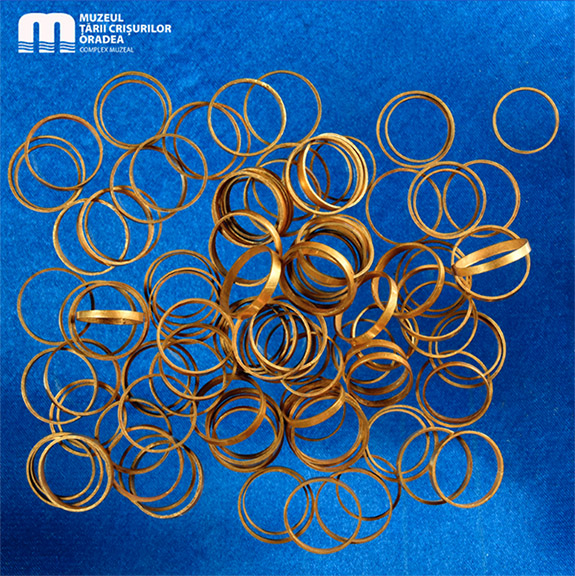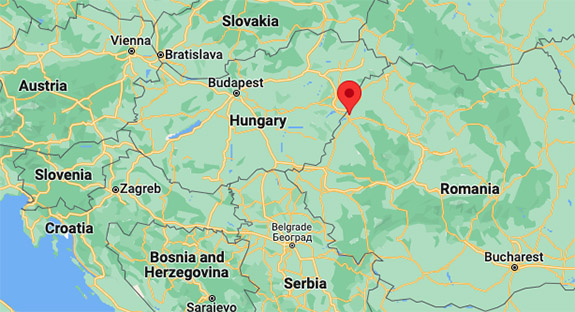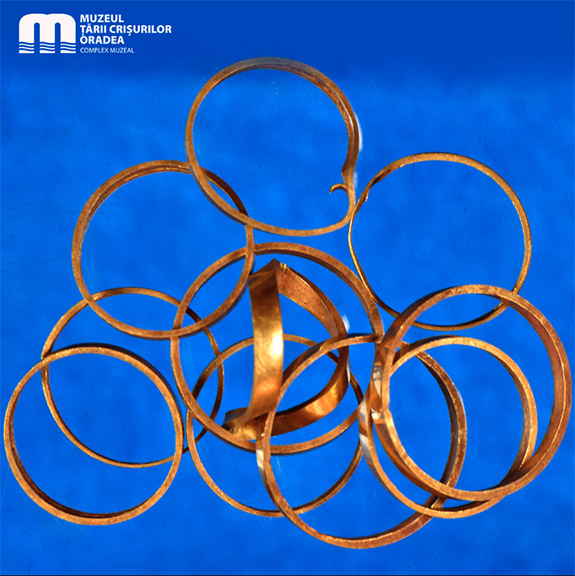August 15th, 2022
A team of archaeologists has uncovered a hoard of 169 gold rings dating back 6,500 years during the excavation of a burial site near the Romanian-Hungarian border. The tomb was discovered during the construction of a new road linking the Romanian city of Oradea with the A3 freeway.

The rings, which weigh a combined 200 grams (0.44 pounds), were extracted from a tomb of a "high status" woman near Biharia, Romania, according to a statement from the Tarii Crisurilor Museum.

During a recent press conference, Dr. Calin Ghemis described how the 169 gold rings were not intended to be worn on the woman's fingers but, instead, adorned her hair. Also found in her tomb was a multi-spiral copper bracelet, two golden beads and about 800 mother-of-pearl beads. Based on an examination of her teeth and stature, the Tiszapolgár woman is believed to have been a person of high social status.

Ghemis said the find is "sensational" because the total number of gold pieces ever recovered from the Carpathian Basin — a vast area centered on modern-day Hungary, but also including parts of Slovakia, Poland, Ukraine, Romania, Serbia, Croatia, Slovenia and Austria — is only 150.
"Here, there are over 160 in just one inventory,” he said.
Gold items representing the Tiszapolgár culture (4500–4000 BC) are very rare because gold was very hard to come by in that prehistoric time period. The rings were made from alluvial gold extracted from sand using a washing process that removes the lighter sand and leaves the dense gold particles. This time period pre-dates the technique of extracting gold from rock.
Labs in Romania and the Netherlands will be using carbon-14, DNA analysis and anthropological research to determine a precise dating of the tomb's contents. After the analysis is completed, the hoard will go on display at the Tarii Crisurilor Museum in Oradea, Romania.
Credits: Images courtesy of Tarii Crisurilor Museum. Map by Google Maps.

The rings, which weigh a combined 200 grams (0.44 pounds), were extracted from a tomb of a "high status" woman near Biharia, Romania, according to a statement from the Tarii Crisurilor Museum.

During a recent press conference, Dr. Calin Ghemis described how the 169 gold rings were not intended to be worn on the woman's fingers but, instead, adorned her hair. Also found in her tomb was a multi-spiral copper bracelet, two golden beads and about 800 mother-of-pearl beads. Based on an examination of her teeth and stature, the Tiszapolgár woman is believed to have been a person of high social status.

Ghemis said the find is "sensational" because the total number of gold pieces ever recovered from the Carpathian Basin — a vast area centered on modern-day Hungary, but also including parts of Slovakia, Poland, Ukraine, Romania, Serbia, Croatia, Slovenia and Austria — is only 150.
"Here, there are over 160 in just one inventory,” he said.
Gold items representing the Tiszapolgár culture (4500–4000 BC) are very rare because gold was very hard to come by in that prehistoric time period. The rings were made from alluvial gold extracted from sand using a washing process that removes the lighter sand and leaves the dense gold particles. This time period pre-dates the technique of extracting gold from rock.
Labs in Romania and the Netherlands will be using carbon-14, DNA analysis and anthropological research to determine a precise dating of the tomb's contents. After the analysis is completed, the hoard will go on display at the Tarii Crisurilor Museum in Oradea, Romania.
Credits: Images courtesy of Tarii Crisurilor Museum. Map by Google Maps.


